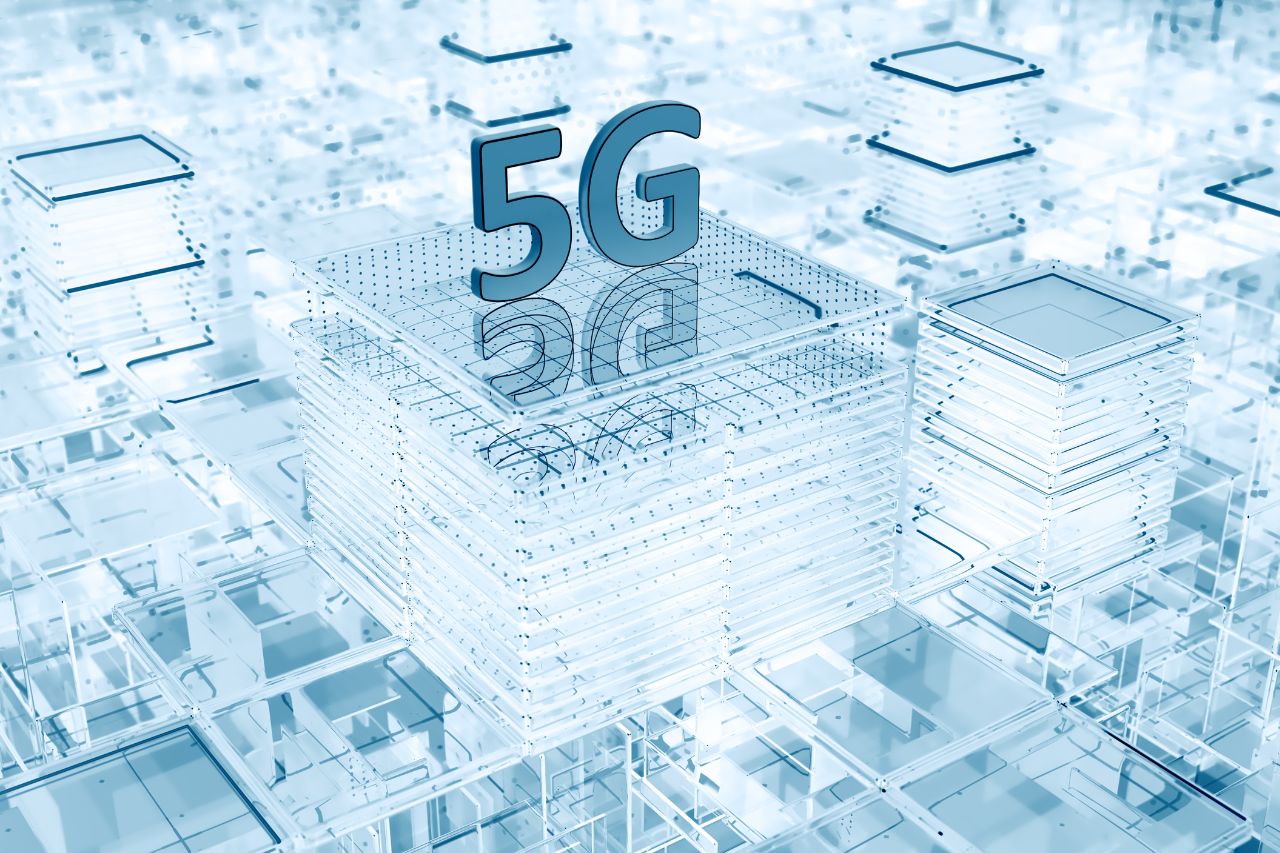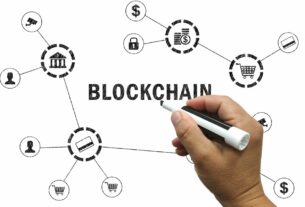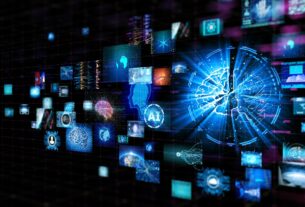The evolution of technology continues to revolutionize our world, and one of the most significant advancements in recent years is the introduction of 5G technology. 5G wireless technology, which is the fifth generation, promises improved connectivity, reduced latency, and higher speeds. One area where 5G is set to have a profound impact is the Internet of Things (IoT). This article explores how 5G technology enhances IoT, creating a more connected and efficient world.
What is 5G Technology?
5G, or fifth-generation wireless technology, is the latest standard for mobile networks. It follows previous generations like 4G LTE and offers several key improvements:
- Faster Speeds: 5G can deliver data speeds up to 100 times faster than 4G. This means downloading a full-length HD movie can take just a few seconds.
- Lower Latency: The term “latency” describes the amount of time it takes for data to move between two points. 5G reduces latency to as low as 1 millisecond, compared to around 30 milliseconds with 4G.
- Increased Connectivity: 5G can support a massive number of devices per square kilometer, making it ideal for densely populated areas and IoT applications.
- Enhanced Reliability: With improved network reliability and stability, 5G ensures a consistent and robust connection for critical applications.
Understanding the Internet of Things (IoT)
The network of linked devices that communicate and share data via the internet is known as the Internet of Things (IoT). These devices, often equipped with sensors and software, collect and share data to enhance efficiency, automation, and decision-making. Applications for the Internet of Things include wearable technology, smart cities, industrial automation, and smart homes.
Key Components of IoT
- Sensors and Actuators: These devices collect data from the environment (sensors) and perform actions based on this data (actuators).
- Connectivity: IoT devices send data via connecting to other networks or the internet.
- Data Processing: Collected data is processed, often in real-time, to extract valuable insights.
- User Interface: Users interact with IoT systems through interfaces like mobile apps or web dashboards.
How 5G Enhances IoT
The combination of 5G and IoT creates a powerful synergy, enabling a new era of connectivity and innovation. Here are some of the key ways 5G enhances IoT:
1. Ultra-Fast Data Transmission
5G’s high-speed data transmission capabilities are crucial for IoT devices that require real-time data processing and analysis. For example, in smart cities, traffic management systems rely on real-time data from sensors to optimize traffic flow and reduce congestion. With 5G, these systems can receive and process data almost instantaneously, leading to more efficient and responsive urban infrastructure.
2. Low Latency for Real-Time Applications
Low latency is essential for applications where even the slightest delay can have significant consequences. In healthcare, for instance, remote surgery relies on real-time communication between the surgeon and robotic instruments. 5G’s low latency ensures that the surgeon’s commands are executed without delay, making remote surgery safer and more effective.
3. Massive Device Connectivity
5G’s ability to connect a vast number of devices per square kilometer is a game-changer for IoT. This is particularly important for industrial IoT applications, where numerous sensors and devices monitor and control complex manufacturing processes. 5G enables seamless communication between these devices, enhancing automation and operational efficiency.
4. Enhanced Reliability and Network Slicing
5G networks are designed to be highly reliable, making them suitable for critical IoT applications. Network slicing, a feature of 5G, allows operators to create multiple virtual networks within a single physical 5G network. Each slice can be tailored to specific requirements, such as low latency for autonomous vehicles or high bandwidth for video surveillance, ensuring optimal performance for different IoT applications.
5. Energy Efficiency
5G technology is more energy-efficient compared to previous generations, which is beneficial for battery-powered IoT devices. Improved energy efficiency extends the battery life of IoT devices, reducing maintenance costs and enhancing the sustainability of IoT deployments.
6. Improved Security
Security is a major concern in the IoT ecosystem due to the vast amount of data being transmitted and the potential for cyberattacks. 5G incorporates advanced security features, such as enhanced encryption and authentication protocols, to protect data and ensure the integrity of IoT networks.
Also Read: Top 5 Shares to Buy for Long-Term Growth in 2024
Real-World Applications of 5G-Enhanced IoT
The integration of 5G and IoT opens up a wide range of possibilities across various industries. Here are some real-world applications where 5G-enhanced IoT is making a significant impact:
Smart Cities
Smart cities leverage IoT and 5G to improve urban living. Examples include:
- Smart Traffic Management: Real-time traffic data from connected sensors helps optimize traffic lights and reduce congestion.
- Public Safety: Surveillance cameras and sensors connected via 5G enhance security and emergency response.
- Waste Management: Smart bins equipped with sensors notify waste collectors when they need to be emptied, improving efficiency.
Healthcare
The healthcare sector benefits immensely from 5G and IoT integration:
- Remote Patient Monitoring: Wearable devices and sensors continuously monitor patients’ health data and transmit it to healthcare providers for real-time analysis.
- Telemedicine: High-quality video consultations and remote diagnostics become more feasible with 5G’s low latency and high-speed connectivity.
- Smart Medical Devices: Connected medical devices, such as insulin pumps and pacemakers, can be monitored and controlled remotely, improving patient care.
Industrial Automation
In manufacturing and industrial settings, 5G-enhanced IoT drives efficiency and innovation:
- Predictive Maintenance: IoT sensors monitor equipment health, predicting failures before they occur and scheduling maintenance to prevent downtime.
- Robotics and Automation: 5G enables real-time communication between robots and control systems, enhancing automation and precision in manufacturing processes.
- Supply Chain Management: IoT devices track goods in real-time, providing visibility and optimizing logistics operations.
Agriculture
Smart agriculture, powered by 5G and IoT, improves crop yields and resource management:
- Precision Farming: IoT sensors monitor soil conditions, weather, and crop health, allowing farmers to make data-driven decisions for optimal planting and irrigation.
- Livestock Monitoring: Connected devices track the health and location of livestock, ensuring timely intervention and reducing losses.
- Automated Equipment: Drones and autonomous tractors connected via 5G enhance efficiency in planting, harvesting, and spraying.
Transportation
The transportation sector sees transformative changes with 5G and IoT:
- Autonomous Vehicles: Low latency and high reliability of 5G are essential for the safe operation of self-driving cars, enabling real-time communication with infrastructure and other vehicles.
- Fleet Management: IoT devices track vehicle performance, location, and driver behavior, optimizing fleet operations and reducing costs.
- Smart Parking: Sensors in parking lots provide real-time information on available spaces, reducing the time spent searching for parking.
The Future of 5G and IoT
The future of 5G and IoT looks promising, with continuous advancements and new applications on the horizon. As 5G networks become more widespread and mature, we can expect even greater innovations in IoT. Some potential future developments include:
Edge Computing
Edge computing involves processing data closer to where it is generated, rather than relying on centralized cloud servers. With 5G, edge computing becomes more feasible, reducing latency and bandwidth usage. For time-sensitive IoT applications like industrial automation and driverless cars, this is especially crucial.
Enhanced AI Integration
Artificial Intelligence (AI) and machine learning will play a crucial role in analyzing the vast amounts of data generated by IoT devices. 5G’s high-speed connectivity and low latency enable more sophisticated AI algorithms to be deployed at the edge, providing real-time insights and decision-making.
Advanced Smart Homes
The combination of 5G and IoT will take smart homes to the next level. Future smart homes will feature more interconnected devices, seamless automation, and enhanced security. From smart appliances and lighting to advanced home security systems, 5G will enable a truly interconnected and intelligent living environment.
Smart Grids and Energy Management
5G-enhanced IoT will revolutionize energy management and smart grids. Smart meters and sensors will provide real-time data on energy consumption, enabling more efficient distribution and reducing energy waste. This will contribute to a more sustainable and resilient energy infrastructure.
The Bottom Line
The integration of 5G technology and the Internet of Things (IoT) is set to transform various industries and aspects of our daily lives. With faster speeds, lower latency, and increased connectivity, 5G enhances the capabilities of IoT devices and applications, leading to more efficient, automated, and intelligent systems. From smart cities and healthcare to industrial automation and agriculture, the potential of 5G-enhanced IoT is vast and exciting. As we continue to embrace and innovate with these technologies, the future of connectivity and automation looks brighter than ever.




